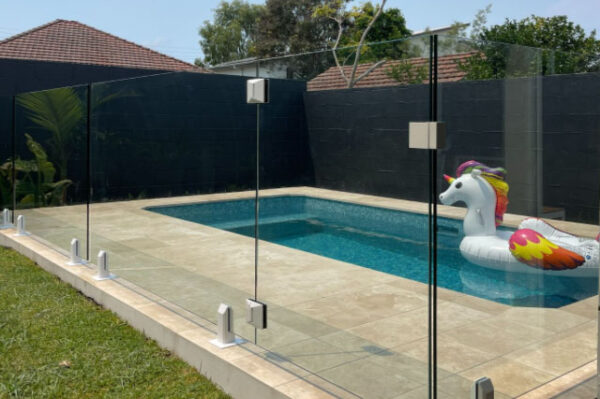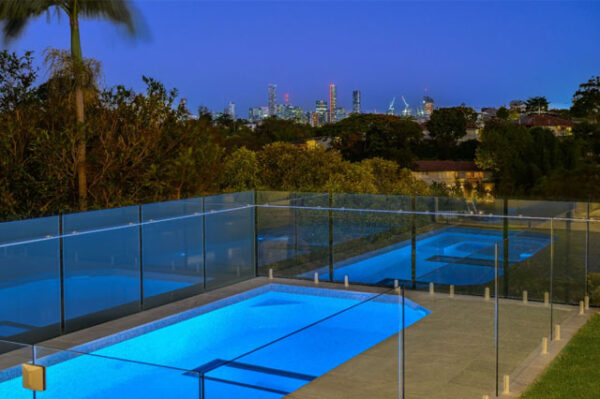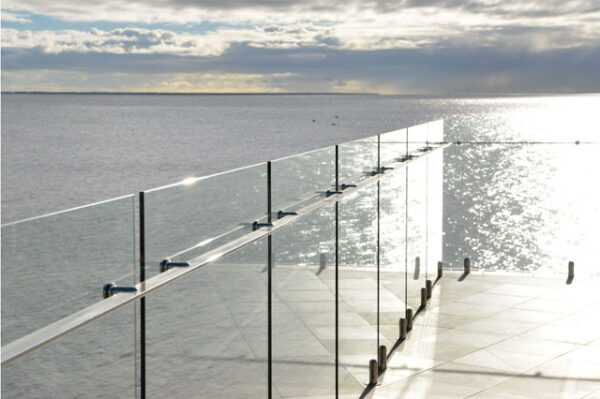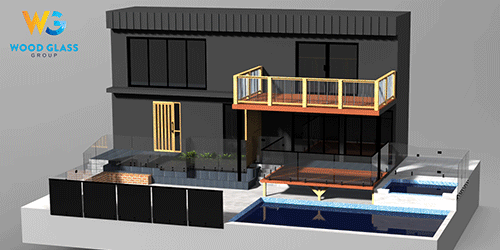How to Choose the Best Pool Gate for an Above-Ground Pool
Introduction
Ensuring your above-ground pool is properly gated is an essential step in promoting safety and peace of mind. Pool gates serve as a protective barrier that reduces the risk of unwanted access, keeping young children, pets, and unsuspecting visitors away from potential danger. Beyond safety, the right pool gate can also enhance the overall look of your backyard, blending seamlessly with your pool’s design.
A secure and well-chosen pool gate involves more than building act and simply installing a barrier. It should comply with local regulations, feature reliable closing mechanisms, and resist tampering or climbing. Though every locale may have more strict requirements and unique codes, the core principles—sufficient height, durable materials, and proper installation—remain the same. By understanding these principles, you’ll be better equipped to select a gate that not only looks appealing but also provides optimal protection.
Understanding Why a Secure Pool Gate Matters
Your pool gate is the first line of defense in preventing accidents. Whether you have curious toddlers or neighbors’ children around, a properly secured gate around swimming pools can drastically reduce the risk of unsupervised water entry. In addition, when people see a well-maintained and solid gate or outdoor pool, it sends a message that you take pool safety seriously, which can deter careless behavior and unwanted trespassing.
Moreover, a secure gate helps you fulfill mandatory safety requirements in most regions. Regulations from local government typically require specific gate heights, gaps between bars, and latching mechanisms that younger kids can’t easily open. Investing time in choosing the right gate up front can save you from costly fines or mandatory modifications later on. Most importantly, it protects the people who matter most.
Checking Local Safety Guidelines
Before you purchase any gate, make sure you understand the official requirements in your area. Different jurisdictions with different standards may vary in the height they require for fences and gates, the direction gates should swing, and the clearance beneath the base plate of gate. These guidelines are designed to keep young children from climbing over or squeezing under barriers.
Often, local inspectors evaluate above-ground pool setups to ensure compliance with building regulations. In some areas, you may need to contact them to submit plans before beginning installation or schedule a final inspection upon completion. By knowing and adhering to these regulations from the start, you avoid the hassle of modifications after the fact. Additionally, a gate that meets local safety codes usually has design features proven to be effective in preventing accidents.
Materials and Durability
One of the most significant choices you’ll make is selecting a material for your pool gate. Common options include steel, aluminum, vinyl, wood, or even tempered glass. Each material has its own advantages in terms of longevity, low maintenance amount, and aesthetic appeal. Steel is very strong, though it may rust without proper coatings. Aluminum is lightweight and usually resistant to corrosion, making it a popular option in humid or damp climates.
Vinyl and wood gates can create a more natural look in your backyard, though these materials may require additional care. Wood especially needs regular sealing or painting to maintain structural integrity. For those looking for a modern, sleek style, a tempered glass gate can be a stunning choice, albeit typically more expensive. Whatever material you decide on, ensure it’s sturdy enough to prevent tampering and holds up in your local weather conditions.
Gate Height and Clearance
Height and clearance guidelines play a crucial role in the safety barriers preventing unauthorized or accidental entry. A gate that is too short or placed too high off the ground level can be an open invitation for climbing or crawling underneath the fencing. Most areas mandate a minimum height requirement above the ground so that children can’t easily scale the fence.
Additionally, there is often a maximum allowable gap at the bottom of pool barriers to prevent small children or pets from wriggling under. The spacing between vertical components of pool barriers or fencing, such as bars or pickets, should be small enough to prevent little ones from sticking their heads or feet through. By ensuring your gate meets these dimensions, you’ll be one step closer to a well-protected pool area.
Self-Closing and Self-Latching Mechanisms
One of the defining features of a secure pool gate is its ability to self-close and self-latch. This means that even if someone forgets to close the gate, it will automatically swing shut and latch on its own. Such mechanisms significantly restrict access to swimming pools and reduce the chance of the pool being left accessible by oversight.
The latch should also be positioned so that young children cannot easily reach it. Placing it higher on the gate’s interior side is a common requirement for property owners in many locales. Beyond the technical requirements and meeting regulatory expectations, self-closing and self-latching mechanisms offer peace of mind. Even on hectic days when you’re juggling multiple tasks, you can trust your gate to handle the crucial job of securing the pool.
Gate Placement and Layout Considerations
The positioning closed position of the gate relative to the pool or spa area is another essential consideration. Most guidelines stipulate the gate should open away from the pool area—meaning you must pull it open rather than push it toward the water. This ensures that if someone or something pushes against the gate, it’s more likely to close rather than swing open.
You should also think about how the gate fits into your overall backyard layout. Avoid placing items like chairs, planters, or decorative objects near the gate that could be used to climb over the fence. If your above-ground pool has a raised deck or steps, ensure there’s no direct path that bypasses the gate entirely. A careful layout can help create multiple layers of security and minimize potential weak points.
Choosing a Design That Complements Your Space
Safety is paramount, but that doesn’t mean your pool gate has to look out of place. Modern gate designs offer a wide variety of styles, allowing you to harmonize the gate with your backyard aesthetic. You can opt for sleek metallic panels, ornate wrought-iron designs, or even semi-transparent tempered glass for a minimalist look.
When choosing a design, consider the broader style of your outdoor space. If you have a natural-themed garden, a wooden or rustic metal gate may blend well. For a modern look, aluminum with vertical pickets often offers a clean, streamlined appearance. Balance functional requirements—like avoiding climbable crossbars or wide gaps—with the visual style you prefer. This dual approach ensures you don’t compromise on safety or aesthetics.
Common Installation Mistakes to Avoid
Rushing the installation process is a common pitfall. Even a high-quality gate can fail to provide adequate protection if it’s not installed correctly. One frequent mistake is setting the gate’s latch or hinges too low, which makes it easier for small children to tamper with. Another issue is failing to adjust the self-closing hinges properly, so the gate either doesn’t close fully or slams shut too forcefully.
People often forget to check for ground shifting over time. If your gate no longer aligns with the latch post, it can easily be left ajar. Regularly inspect hinges, latches, and alignment to catch any issues early. By being proactive, you’ll avoid most of the trouble that leads to non-compliance or increased risk. Proper installation and periodic maintenance keep your gate functioning optimally for years to come.
Conclusion
Choosing the right pool gate goes far beyond a simple purchase. It’s about creating a secure environment that puts safety first, without compromising the enjoyment your pool brings. By understanding local guidelines for safety barriers, selecting durable materials, and paying close attention to installation details, you’re setting the foundation for a protective barrier that functions reliably.
In the long run, a carefully selected and properly installed gate or pool fencing can save you from countless worries and potential mishaps. It demonstrates your commitment to maintaining a safe household and ensures your above-ground pool remains a source of relaxation rather than a point of concern. With the right combination of design, functionality, and compliance, your pool gate will serve as a steadfast and responsible guardian of your family’s well-being.
A final tip is to keep swimming pool gate on a regular inspection schedule and address any damage or alignment issues immediately. Hinges can become stiff over time, latch mechanisms may loosen, and environmental factors can cause gradual wear. By staying proactive, you’ll ensure that your pool gate remains a secure and reliable centerpiece of your pool fence system, providing peace of mind and enjoyment for years to come.
Frequently Asked Questions
Selecting the perfect gate for your above-ground pool can feel overwhelming. The process involves balancing regulations, practical features, and aesthetic choices. Below is a concise Q&A to address some of the most common concerns homeowners face.
Q: Do I need safety barriers and a gate if my above-ground pool walls are high?
A: Even if your pool’s sides are relatively tall, most local guidelines still require a barrier and a gate for any type of permanent or semi-permanent pool. Ladders or steps can allow easy entry to swimming pools, making fencing and a gate essential.
Q: How often should I check my gate for wear or damage?
A: Inspecting your gate every few months is advisable. Look for rust, loose hinges, or any misalignment that might prevent proper closing. Regular upkeep extends the life of the gate and ensures ongoing safety.
Q: Can I use a standard garden gate for my above-ground pool fence?
A: Standard garden gates might not meet the specific safety requirements new outdoor pool, particularly those that comply with rules related to self-closing, self-latching, and minimal gaps. You’ll need a gate specifically designed to handle pool safety standards.
Q: What if I want a complete custom design?
A: Custom gates can certainly satisfy safety requirements as long as they follow local building codes. Be sure to consult with the fabricator or designer working order to incorporate all necessary features, such as correct latch heights and minimal gaps.
Q: Are there options for pool owners for integrating an alarm with the pool gate?
A: Yes. Many modern pool gate systems can be fitted with alarms that sound if the gate is opened unexpectedly. This adds another layer of security, especially for families with young children.




